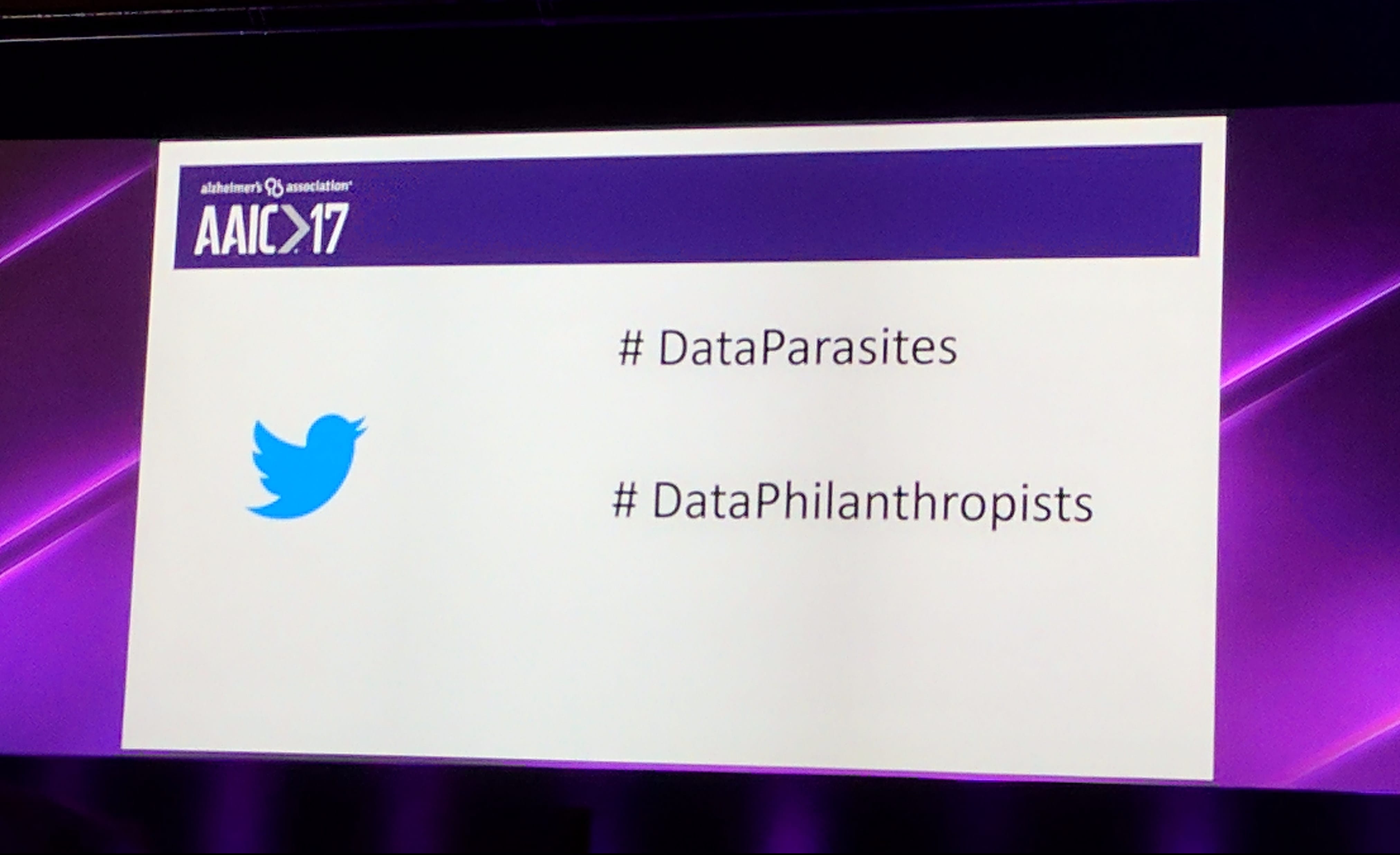Posted By: Timothy J. Hohman, Assistant Professor of Neurology, Vanderbilt Memory & Alzheimer’s Center
I just returned from the Alzheimer’s Association International Conference (AAIC) in London. AAIC always covers an amazing breadth of the most recent advances in research and clinical care for Alzheimer’s Disease (AD), and this year placed a particular emphasis on biomarkers. More specifically, the focus was on how we can integrate the growing availability of in vivo biomarkers of AD neuropathology into diagnostic criteria for research, and into screening procedures for clinical trials.

The Potential of Biomarkers
Philip Scheltens, MD, PhD, from the VU University Medical Center in the Netherlands kicked off the meeting with an impassioned lecture on the present landscape of biomarkers in AD, and the future potential of biomarkers in screening, diagnosis, targeted treatments, and disease prevention. AD is characterized by two primary neuropathologies: extracellular plaques composed of the amyloid-β protein and neurofibrillary tangles composed of hyper-phosphorylated tau. Over the past ten years, there has been a growing emphasis on measuring these proteinopathies in vivo, including the development of positron emission tomography tracers for amyloid and tau, and the development of assays to measure these proteins in cerebrospinal fluid. In 2011, the National Institute on Aging and the Alzheimer’s Association convened four work groups to develop new research criteria for diagnosis that integrated biomarkers of amyloid deposition into the clinical criteria for dementia. This year’s conversations focused on taking steps towards diagnosis and screening that relied solely on biomarkers.
Dr. Schelten’s emphasis on the future of biomarkers set up a somewhat heated panel presentation laying out a new NIA-AA research framework to investigate Alzheimer’s disease. Led by Clifford Jack, MD, the proposed framework would place a greater emphasis on biomarkers of the two primary proteinopathies, while also emphasizing the measurement and characterization of neurodegeneration. The panel has provided the opportunity for the community to give feedback directly to the workgroup as they continue to refine the proposed framework. Certainly, this will be a critical issue in AD research in the coming year and has important implications for clinical trials, study design, and (eventually) clinical care.
Functional Pathways, GWAS Findings, and AD
This is a genetics blog, though, so let’s get into the genetics! The primary keynote session on the genetics of AD was given by Julie Williams, PhD, from Cardiff University. Dr. Williams provided an overview of where we currently stand in unraveling the genetic architecture of the disease, and called for an increased emphasis on uncovering functional pathways that underlie the known risk loci. Dr. Williams argued the innate immunity and inflammation are fundamental pathways in AD pathogenesis, and that the causal pathways of sporadic AD may be fundamentally distinct from familial forms that operate strictly through an amyloid pathway.
Research presented throughout the conference re-emphasized the importance of innate immunity, including new risk loci in common variant and rare variant analyses completed by the Alzheimer’s Disease Genetics Consortium that implicated innate immune pathways (e.g., LILRA5). Additionally, many of the functional genomic approaches emphasized the importance of macrophage and monocyte expression in predicting AD, including 14 genes implicated in a genetically regulated transcriptomic analysis by Towfique Raj, PhD, from the Icahn School of Medicine.

Given the growing emphasis on biomarkers throughout the field of AD, it was also encouraging to see substantial growth in the size of endophenotype analyses, including a GWAS of cerebrospinal fluid biomarkers of AD by Yuetiva Deming, PhD, analyzing data from over 3,000 individuals. Simon Lovestone, PhD, gave an additional “big data” plenary lecture in which he laid out how large-scale European collaborations integrating electronic medical record data and other big data resources will change the way research is completed. He called on #DataParasites (those who perform secondary analyses on existing datasets) to make use of rich data resources to identify new treatment targets and #DataPhilanthropists (data providers) to continue to step up and provide open access to collected data. Large scale data collection, data sharing, and secondary data analysis are becoming central components of AD research.
Varied Approaches to #EndALZ
There were many other areas of focus: from advances in neuroimaging and large-scale omics, to a growing emphasis on sex differences, racial disparities, and pathways of resilience, and a growing acceptance of the heterogeneity in the neuropathological presentation of the disease. If you are interested in AD and want to learn more from a variety of perspectives, this is a fantastic conference to attend. The field of AD is necessarily interdisciplinary and this conference is a fantastic representation of that diversity. Multiple perspectives, approaches, and treatment pathways will be needed to beat this devastating disease. After another year and another great conference, I’m hopeful and inspired to keep working to #EndALZ. Join us!
Timothy J. Hohman, PhD, is an Assistant Professor of Neurology at the Vanderbilt Memory & Alzheimer’s Center. He has been part of the ASHG community since 2013.
